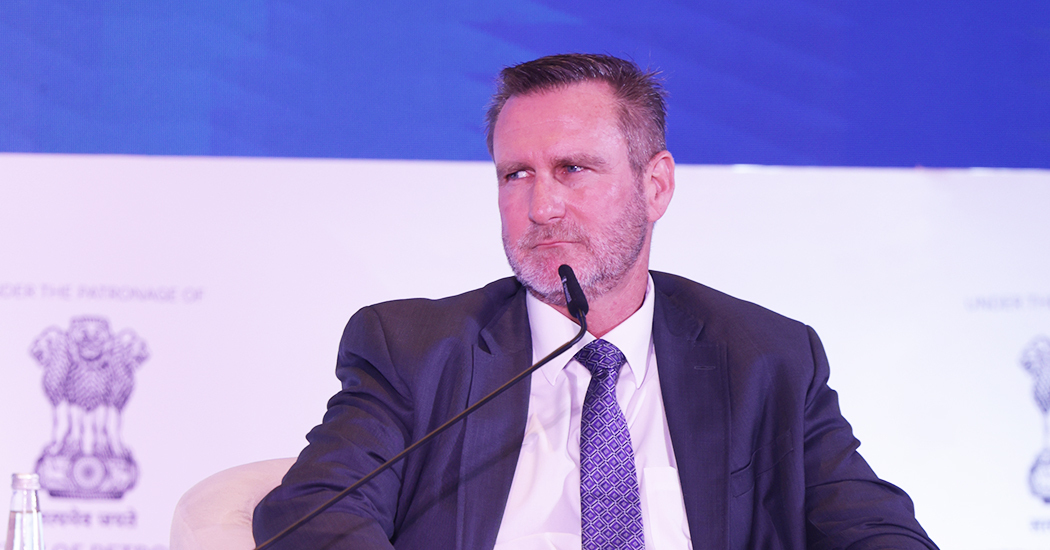The reliable role of gas in the evolving energy mix
Natural gas and LNG are consolidating their position in the world’s emerging future energy basket, but bumps remain. And countries including India are equipping themselves for greater dependence on the fuel while supply and demand factors remain at play in the wider market.
These were among the considerations of Wednesday panel session, “The evolving strategic role of natural gas and LNG in multifaceted new energy systems”. The potential for LNG to support renewables and carbon capture technology was given emphasis, as was the need to maintain cost-effective and secure supply chains - not least for nations like India where consumption is predicted to rise dramatically driven by growth and sectoral shifts.
India’s LNG imports rose by 21% in 2024, Akshay Kumar Singh, Managing Director and CEO, Petronet LNG, confirmed “primarily driven by more consumption in the power sector”. “Consumption of natural gas increased drastically…one of the reasons was that volatility was less in the international market,” he said.
“But over the year, growth was predominantly happening because of economic activity picking up post-COVID. And because of economic activity, urbanisation…and the manufacturing sector is picking up. “Energy is required and the role of natural gas in the overall energy basket is going to play a major role in India’s growth story.” Source: India Energy Week Show Dailies Team
Source: India Energy Week Show Dailies Team
The nation has been busy preparing pipelines and terminals to deal with rises in gas supply and use as the policymakers and regulator became “the facilitator” of the industry, explained Suresh Manglani, CEO, Adani Total Gas Ltd.
“We are getting fully prepared to make sure that when LNG in 27/28 onwards, becomes more affordable, India is fully ready to receive it,” he said, also highlighting long-haul transport and mining as potential LNG growth areas.
Izumi Kai, CEO, JERA Asia underlined the importance of gas and LNG in energy security for Asia overall, but explained that its place varied among countries, some surging demand but still coal reliant.
“We have clear reasons to justify continuous use of this important fuel…but we can’t simply replace coal with LNG,” he said, also pointing to its use as a potential hydrogen carrier. “Therefore, it is coal plus renewables - those available options need to be developed just to keep up.” The panel also approached the need for strategic policy and private sector collaboration to ensure sustainable gas growth.
Cristian Signoretto, Director Global Gas & LNG Portfolio, Eni SPA, extolled gas advantages such as lower emissions, air quality, storage, transportation and versatility, and “coupling nicely with renewables development”.
“We are fairly bullish on the fact gas and LNG is here to stay in order to accompany the transition and…the growth prospectus,” he said. “This is true, everywhere. But it is important the right policy be in place in order for gas to thrive and also to keep staying competitive, which is one of the most important elements for growth and development.”
This was echoed by Andrew Barry, Chairman,, ExxonMobil LNG Market Development Inc. and VP, Global LNG Marketing ExxonMobil Asia Pacific Private Ltd. The audience was told of the importance of long-term contracts to give stability to consumers, and producers investing heavily in infrastructure.
“We’ve had a very unusual time in the market in the last few years and some extraordinary prices, which many of us would never forecast,” he said. “But during that time about 80% of the entire market was still under long-term contracts…maybe not exposed to this volatility in the international spot market; that volatility has been very detrimental.”
Russell Hardy, Group CEO, Vitol, said a lot of long-term contracts in Europe were, however, “regulated away” in favour of shorter-term competition…floating price, daily price or monthly price contracts.
“That in turn, has brought a bit of volatility because customers have less certainty around price formation and expectations for the future.” Hardy touched on the advantages and negatives of storage to ensure supply and hedge against price rises, as well as a potential oversupply as 200 million tons of new production under construction lands 2028-31.
“The oversupply will probably only last a period of time and again, price will do the work, demand will return, and the market will rebalance.” Singh added: “You need to have a natural gas; without that you cannot achieve. Once prices are moderated or stabilised, there is no major peak. Definitely, natural gas consumption in India is going to be on an upward trend.”





